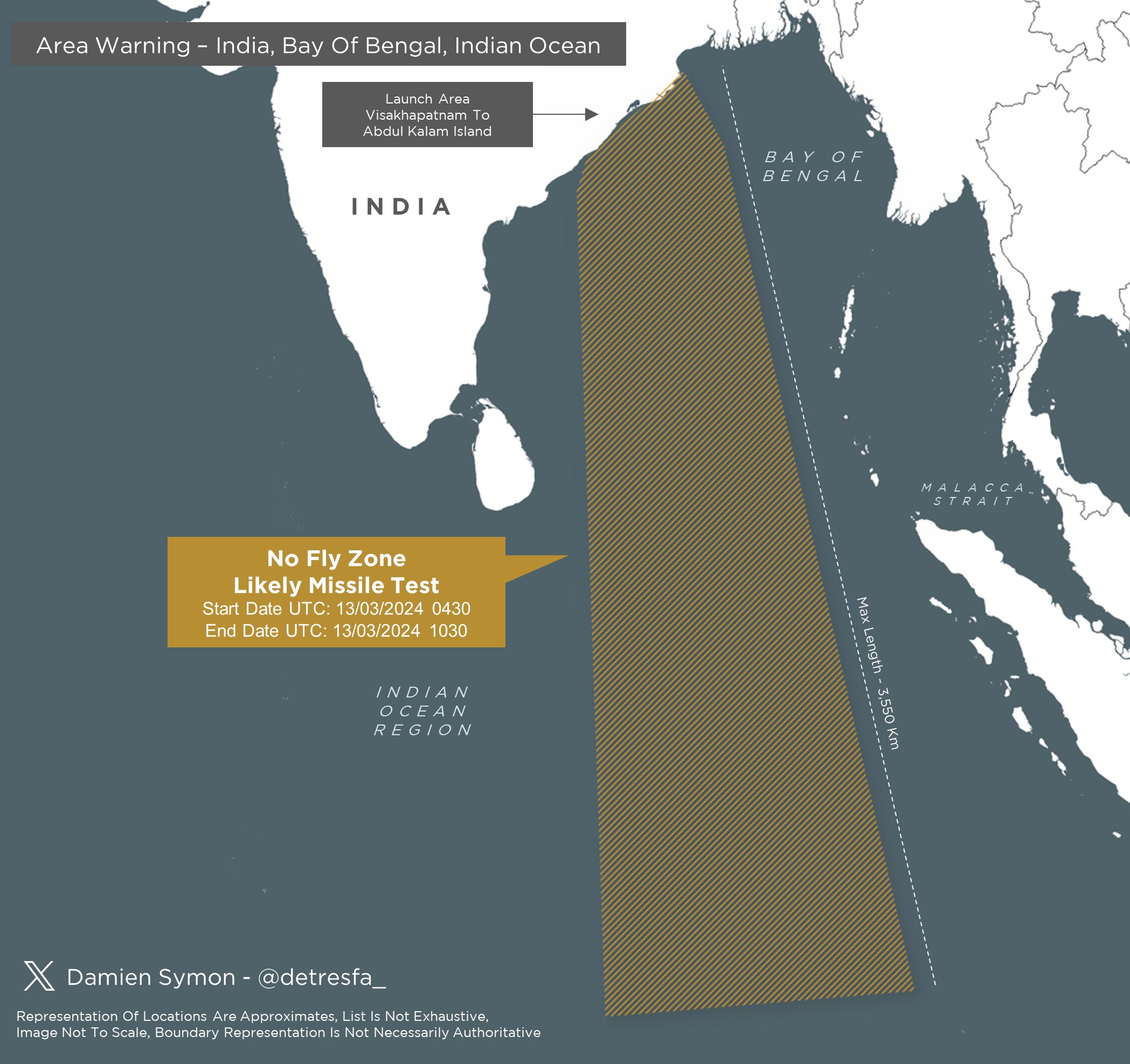
India has withdrawn its Notice to Airmen (NOTAM) for a significant no-fly zone in the Bay of Bengal, signaling the cancellation of a much-anticipated missile test. The initial NOTAM outlined a restricted airspace stretching across a distance of 3550 kilometers, fueling conjecture that India was preparing to test its K-4 submarine-launched ballistic missile (SLBM).
This speculation intensified in the aftermath of India's recent successful demonstration of the Agni-V missile, which possesses advanced Multiple Independently Re-entry Vehicle (MIRV) capability. MIRV technology allows a single missile to deliver multiple warheads, significantly increasing strategic capabilities.
While official sources have not disclosed the precise reasons behind the test cancellation, the deactivated NOTAM definitively confirms that the planned launch in the Bay of Bengal will not proceed.
Security analysts weigh in
Experts in the field of defense strategy offer varying perspectives on India's decision. Some analysts suggest that the cancellation could indicate technical difficulties encountered during the pre-launch phase. Others hypothesize that shifting strategic priorities may have prompted India to postpone the test for a later date.Regardless of the specific reason, the deactivated NOTAM underscores the complex and often unpredictable nature of missile testing programs. India's robust missile development endeavors are closely monitored by regional and global powers, with each successful test enhancing the nation's strategic deterrent capabilities.
